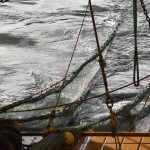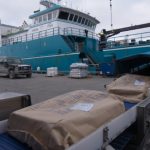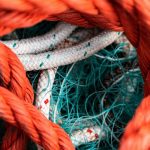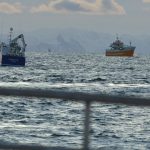Worldwide the farming of omnivorous and carnivorous species produces twice as much (24 million tonnes) of harvested farmed species – such as salmon, shrimp and tilapia – as it uses (about 12 million tonnes) of caught wild fish in the form of fishmeal and fish oil in their feed.
So it takes only half a tonne of anchovy (or other species) to produce each tonne of farmed fish, on a global basis.
The farmed species which uses most fishmeal and fish oil in its diet is salmon. Some years ago it did take three to four tonnes of wild feed fish to produce one tonne of salmon – but improved techniques, which reduce wastage and increase efficiency, and some substitution with vegetable materials have reduced that to 1.7 tonnes, and falling.
If one compares fish farming with catching wild fish, farmed fish consume considerably less fish in their diets for each kilo of weight gain than do their wild equivalents.
Charles Clover, speaking at a preview of the film, said the five to one figures came from recent work by marine scientist, Dr Albert Tacon. IFFO is aware of this work, but using the same data, has corrected some errors in the calculation and presented the figures given above in open meetings. The full calculation will be published in a scientific journal later this year. One of the errors was to fail to factor in that nearly 25% of the raw material used to make fishmeal and oil is recycled trimmings (heads and guts etc) from the processing of fish for human consumption.
NOTE: This film, written by Charles Clover, directed by Rupert Murray and released on June 8 in the UK, focuses mainly on over fishing of the world`s oceans and seas, for example Blue Fin Tuna. A very short section of this film refers to aquaculture, where comments included one that fish farming was not all it seems, that it uses more fish than it produced and that it takes five kilos of anchovy to produce one kilo of salmon.








